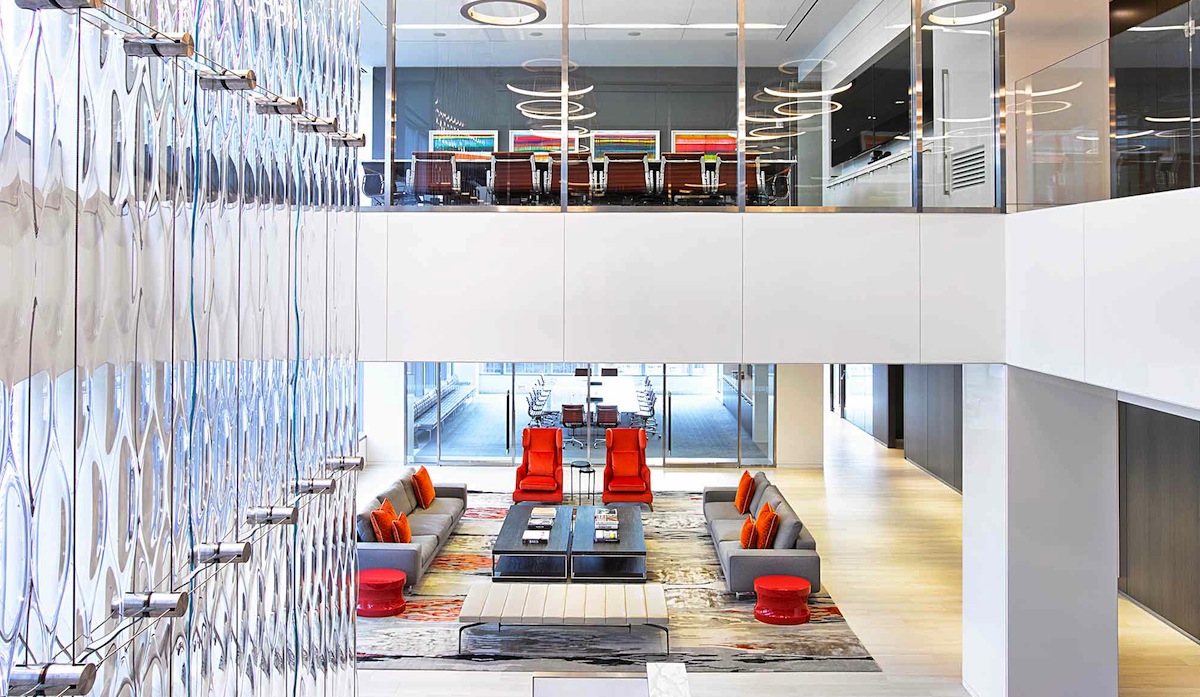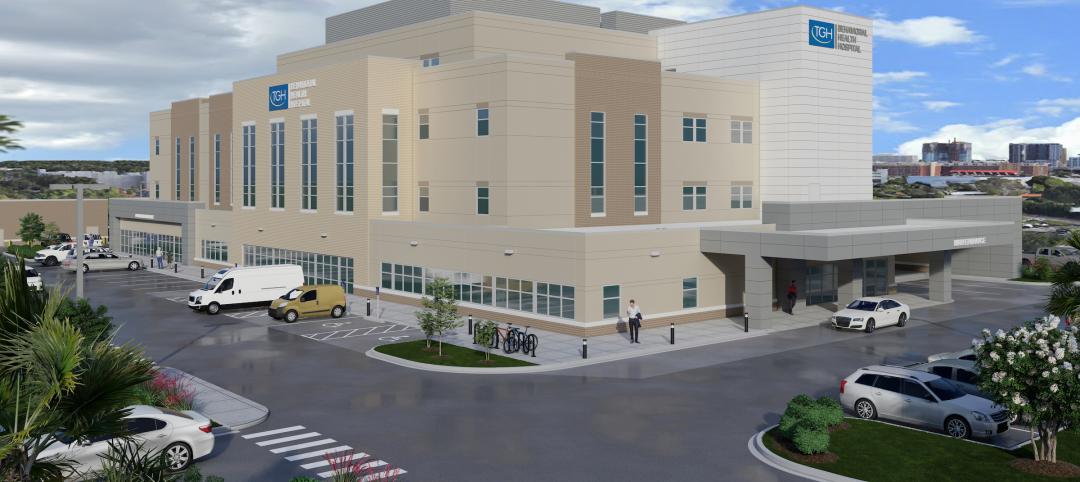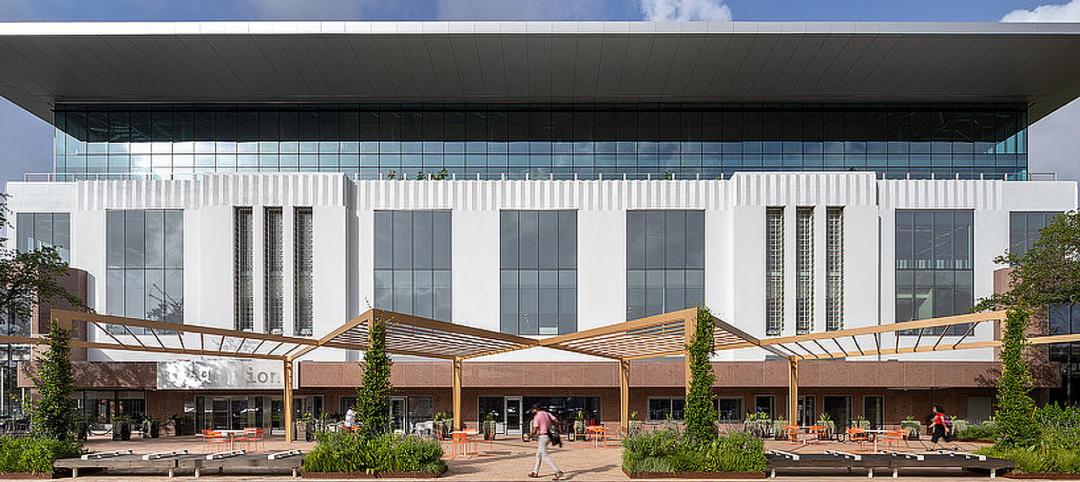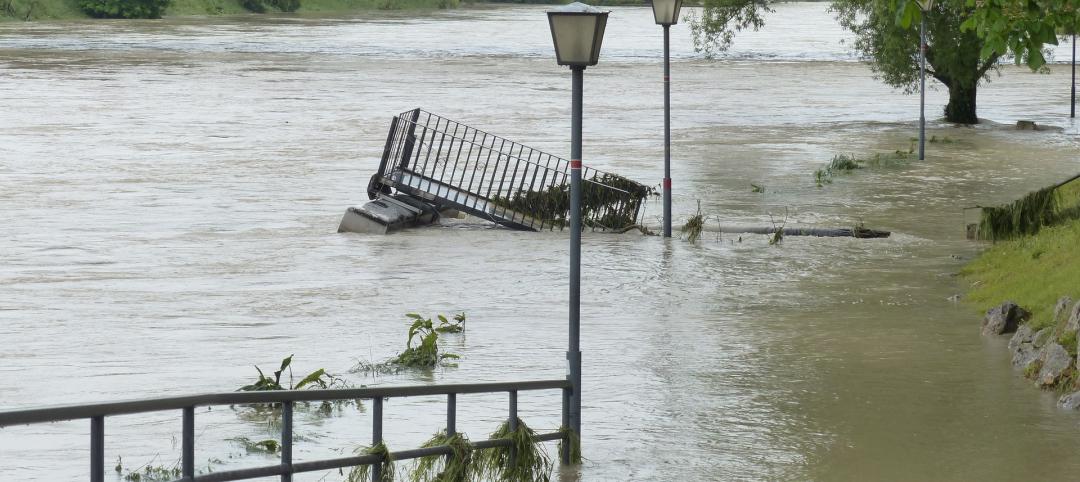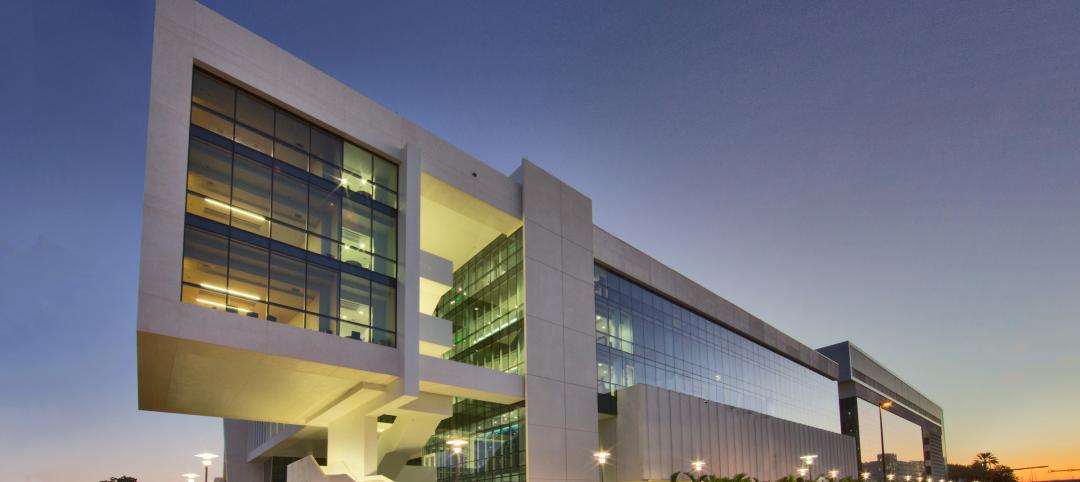This year marks Gensler’s 50th anniversary. As it looks toward the future, the planet’s largest architectural design firm sees a world “on the cusp of breakthroughs made possible by innovation, urbanization, and global connectivity,” write co-CEOs David Gensler and Andy Cohen, FAIA, IIDA; and Diane Hoskins, FAIA, in Gensler’s just-released Design Forecast 2015.
Some of the topics Gensler addresses in its 73-page forecast—such as the role of design in increasingly citified environments, where generational demarcations are not always clear and where technological advances proceed unabated—might sound familiar to anyone who’s been keeping up with current events within the nonresidential construction universe.
However, many other AEC firms are probably thinking about how they should respond to the same megatrends that Gensler identifies as shaping design:
• Workplaces are rethinking the nature of work itself as social media and business networks mesh.
• As more people move into cities, innovation will be the key to pragmatic and affordable approaches to planning.
• If technology is raising the stakes on just about everything, where does the human dimension come in?
• In tackling problems revolving around infrastructure resilience, societies are leaning toward holistic solutions, active management, and stewardship.
• As density becomes the abiding development strategy, developers and owners are attracting the best tenants with rich amenities and transit-served destinations.
• Good data and strong analytics are crucial for keeping up with generational cohorts that are “moving targets.”
Gensler’s Forecast also cites 27 trends that are directly impacting the firm’s three primary practices: Workplace, Community, and Lifestyle. Here’s a sampling:
Commercial office buildings “are less of a stand-alone real estate product and more a part of mixed use.” That use, more often than not, is a combination that goes beyond towers to provide “different scales, and … promote[s] the kind of informal interaction that generates higher retail traffic and evening and weekend activity.”
An organizational imperative for an energy sector that must stay flexible and adaptable in a volatile world “is to align: one brand, mission, purpose, and workforce.”
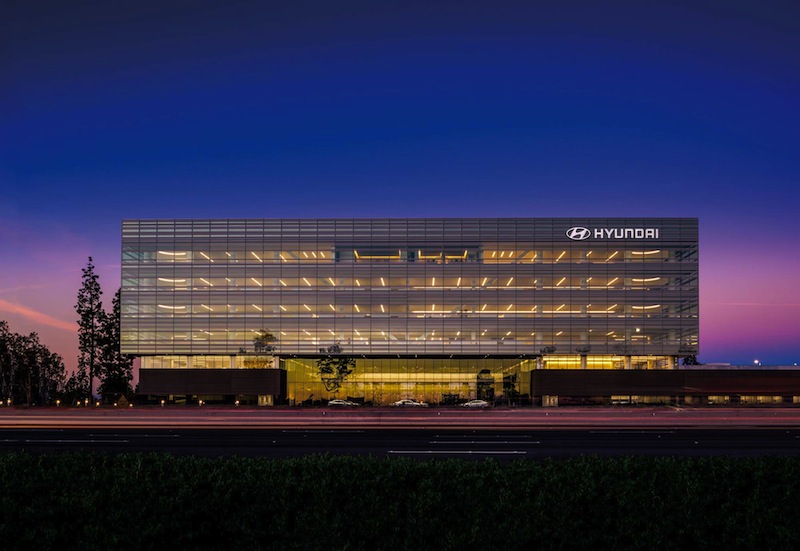 Corporate campuses are shedding their stodgy image as disconnected, disparate buildings. By consolidating operations “under one roof,” companies maximize interactions, foster collaboration and innovation, and promote a sense of community. Photo: Hyundai Motor America, Fountain Valley, Calif. / courtesy Gensler
Corporate campuses are shedding their stodgy image as disconnected, disparate buildings. By consolidating operations “under one roof,” companies maximize interactions, foster collaboration and innovation, and promote a sense of community. Photo: Hyundai Motor America, Fountain Valley, Calif. / courtesy Gensler
Technology “disrupts, so tech companies are questioning how buildings work. That means rethinking their performance and exploring innovations like untethered power.”
A burgeoning media sector, despite its equipment-heavy context, is still a creative industry that favors workspaces that are “open, amenity-filled, flexible in relation to new technologies, and capable of being scaled up fast for growth.”
Mass customization will drive product design, as large cities serve as micro-markets for products and innovation hubs that influence broader consumer tastes.
Life sciences companies are replacing traditional labs with technically complex workplaces that support the latest scientific advances, and allow researchers to form interdisciplinary teams for collaboration.
Next-generation aircraft provides a growth opportunity for large, non-hub airports to offer direct international service, city to city, bypassing existing gateway hubs. Global mega-hubs will grow and evolve as leisure destinations with more space dedicated to retail and dining. “Primed by smart devices, the passenger experience will take cues from retail centers and hotels.”
Consolidation, demographic shifts, and new competition are causing “massive” changes in the healthcare sector. Consumers want more choices. Work-based wellness is entering into the healthcare space. And the rise in specialty care centers reflects the movement toward personalized medicine that integrates clinical innovations with tailored care delivery.
What’s differentiating retail centers in an age of online shopping is their engagement with customers and communities. “As retailers’ real and digital worlds converge, the browse/buy function is evolving.” And word of mouth, so important to sales, “is part of the smartphone data that give retailers the bigger picture.”
In a digital era, when an experience that can’t be shared in real time “didn’t happen,” the goal of entertainment projects needs to be to connect with audiences before, during and after the event “so people are engaged and the ROI is higher.”
The hospitality sector is working overtime to be informal and welcoming, by integrating local culture and letting the larger community in whenever they can.
Countries in the Middle East and Asia are competing for which can build the tallest building. But the success of these “vertical cities” will ultimately be measured “by how well they attract and support tenants, and how well they fit with and enliven the city at their feet.”
Gensler foresees tomorrow’s mixed-use towers as anchors for diverse, walkable and transit-served districts.
Read the Gensler’s Design Forecast 2015.
Related Stories
Engineers | Sep 15, 2023
NIST investigation of Champlain Towers South collapse indicates no sinkhole
Investigators from the National Institute of Standards and Technology (NIST) say they have found no evidence of underground voids on the site of the Champlain Towers South collapse, according to a new NIST report. The team of investigators have studied the site’s subsurface conditions to determine if sinkholes or excessive settling of the pile foundations might have caused the collapse.
Office Buildings | Sep 14, 2023
New York office revamp by Kohn Pedersen Fox features new façade raising occupant comfort, reducing energy use
The modernization of a mid-century Midtown Manhattan office tower features a new façade intended to improve occupant comfort and reduce energy consumption. The building, at 666 Fifth Avenue, was originally designed by Carson & Lundin. First opened in November 1957 when it was considered cutting-edge, the original façade of the 500-foot-tall modernist skyscraper was highly inefficient by today’s energy efficiency standards.
Healthcare Facilities | Sep 13, 2023
Florida’s first freestanding academic medical behavioral health hospital breaks ground in Tampa Bay
Construction kicked off recently on TGH Behavioral Health Hospital, Florida’s first freestanding academic medical behavioral health hospital. The joint venture partnership between Tampa General (a 1,040-bed facility) and Lifepoint Behavioral Health will provide a full range of inpatient and outpatient care in specialized units for pediatrics, adolescents, adults, and geriatrics, and fills a glaring medical need in the area.
Adaptive Reuse | Sep 13, 2023
Houston's first innovation district is established using adaptive reuse
Gensler's Vince Flickinger shares the firm's adaptive reuse of a Houston, Texas, department store-turned innovation hub.
Giants 400 | Sep 12, 2023
Top 75 Retail Sector Engineering and Engineering Architecture (EA) Firms for 2023
Kimley-Horn, Henderson Engineers, Jacobs, and EXP head BD+C's ranking of the nation's largest retail building engineering and engineering/architecture (EA) firms for 2023, as reported in the 2023 Giants 400 Report. Note: This ranking factors revenue for all retail buildings work, including big box stores, cineplexes, entertainment centers, malls, restaurants, strip centers, and theme parks.
Giants 400 | Sep 11, 2023
Top 140 Retail Sector Architecture and Architecture Engineering (AE) Firms for 2023
Gensler, Arcadis, Core States Group, WD Partners, and NORR top BD+C's ranking of the nation's largest retail sector architecture and architecture engineering (AE) firms for 2023, as reported in the 2023 Giants 400 Report. Note: This ranking factors revenue for all retail buildings work, including big box stores, cineplexes, entertainment centers, malls, restaurants, strip centers, and theme parks.
Resiliency | Sep 11, 2023
FEMA names first communities for targeted assistance on hazards resilience
FEMA recently unveiled the initial designation of 483 census tracts that will be eligible for increased federal support to boost resilience to natural hazards and extreme weather. The action was the result of bipartisan legislation, the Community Disaster Resilience Zones Act of 2022. The law aims to help localities most at risk from the impacts of climate change to build resilience to natural hazards.
MFPRO+ Research | Sep 11, 2023
Conversions of multifamily dwellings to ‘mansions’ leading to dwindling affordable stock
Small multifamily homes have historically provided inexpensive housing for renters and buyers, but developers have converted many of them in recent decades into larger, single-family units. This has worsened the affordable housing crisis, say researchers.
Engineers | Sep 8, 2023
Secrets of a structural engineer
Walter P Moore's Scott Martin, PE, LEED AP, DBIA, offers tips and takeaways for young—and veteran—structural engineers in the AEC industry.
Healthcare Facilities | Sep 8, 2023
Modern healthcare interiors: Healing and care from the outside in
CO Architects shares design tips for healthcare interiors, from front desk to patient rooms.


